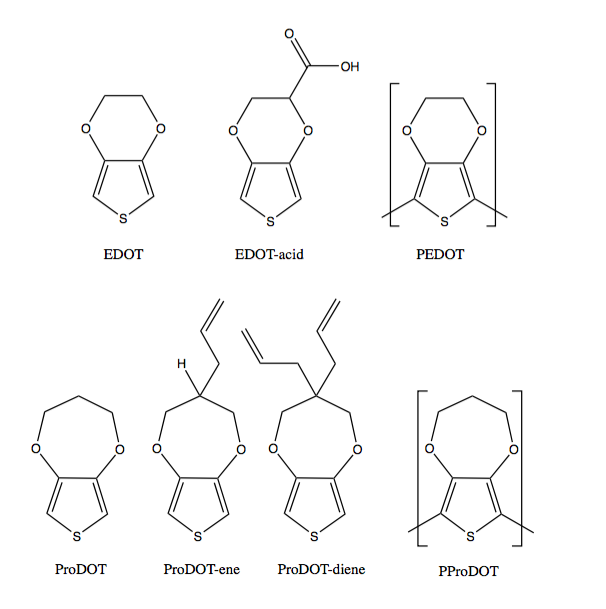Design, Synthesis, and Characterization of Conjugated Polymers for Integrating Electronic Biomedical Devices with Living Tissue
-
1
The University of Delaware, Materials Science and Engineering, United States
We are continuing to investigate the design, synthesis, and characterization of conjugated thiophenes for interfacing a variety of electronic biomedical devices with living tissue. Examples of these devices include microfabricated cortical electrodes, cochlear implants, cardiac monitoring and stimulation devices, peripheral nerve interfaces, and retinal prosthetics. We have focused our efforts on polymers and copolymers prepared from functionalized thiophene derivatives including 3,4-ethylenedioxythiophene (EDOT) and 3,4-propylenedioxythiophene (ProDOT). These materials make it possible to improve the integration of hard, inorganic, metallic and semiconducting, electron and hole-conducting solid electrodes with soft, ionically conducting, organic living tissue. Our most recent efforts have focused on carboxylic-acid functionalized variants of EDOT (EDOT-acid) and thiol-ene functionalized variants of ProDOT. These latter materials can be readily modified using highly efficient "click" chemistry.

[1]
Students, Post-Doctoral Scholars, and Collaborators; National Institutes of Health; National Science Foundation; Army Research Office; Defense Advanced Research Projects Agency; The University of Delaware; Ecole des Mines de Saint-Etienne in Gardanne; The University of Michigan
References:
[1] http://dx.doi.org/10.1557/mrc.2015.17
Keywords:
Biocompatibility,
polymer,
material design,
medical application
Conference:
10th World Biomaterials Congress, Montréal, Canada, 17 May - 22 May, 2016.
Presentation Type:
New Frontier Oral
Topic:
Nano-structured materials for unique functions
Citation:
Martin
D
(2016). Design, Synthesis, and Characterization of Conjugated Polymers for Integrating Electronic Biomedical Devices with Living Tissue.
Front. Bioeng. Biotechnol.
Conference Abstract:
10th World Biomaterials Congress.
doi: 10.3389/conf.FBIOE.2016.01.02428
Copyright:
The abstracts in this collection have not been subject to any Frontiers peer review or checks, and are not endorsed by Frontiers.
They are made available through the Frontiers publishing platform as a service to conference organizers and presenters.
The copyright in the individual abstracts is owned by the author of each abstract or his/her employer unless otherwise stated.
Each abstract, as well as the collection of abstracts, are published under a Creative Commons CC-BY 4.0 (attribution) licence (https://creativecommons.org/licenses/by/4.0/) and may thus be reproduced, translated, adapted and be the subject of derivative works provided the authors and Frontiers are attributed.
For Frontiers’ terms and conditions please see https://www.frontiersin.org/legal/terms-and-conditions.
Received:
27 Mar 2016;
Published Online:
30 Mar 2016.